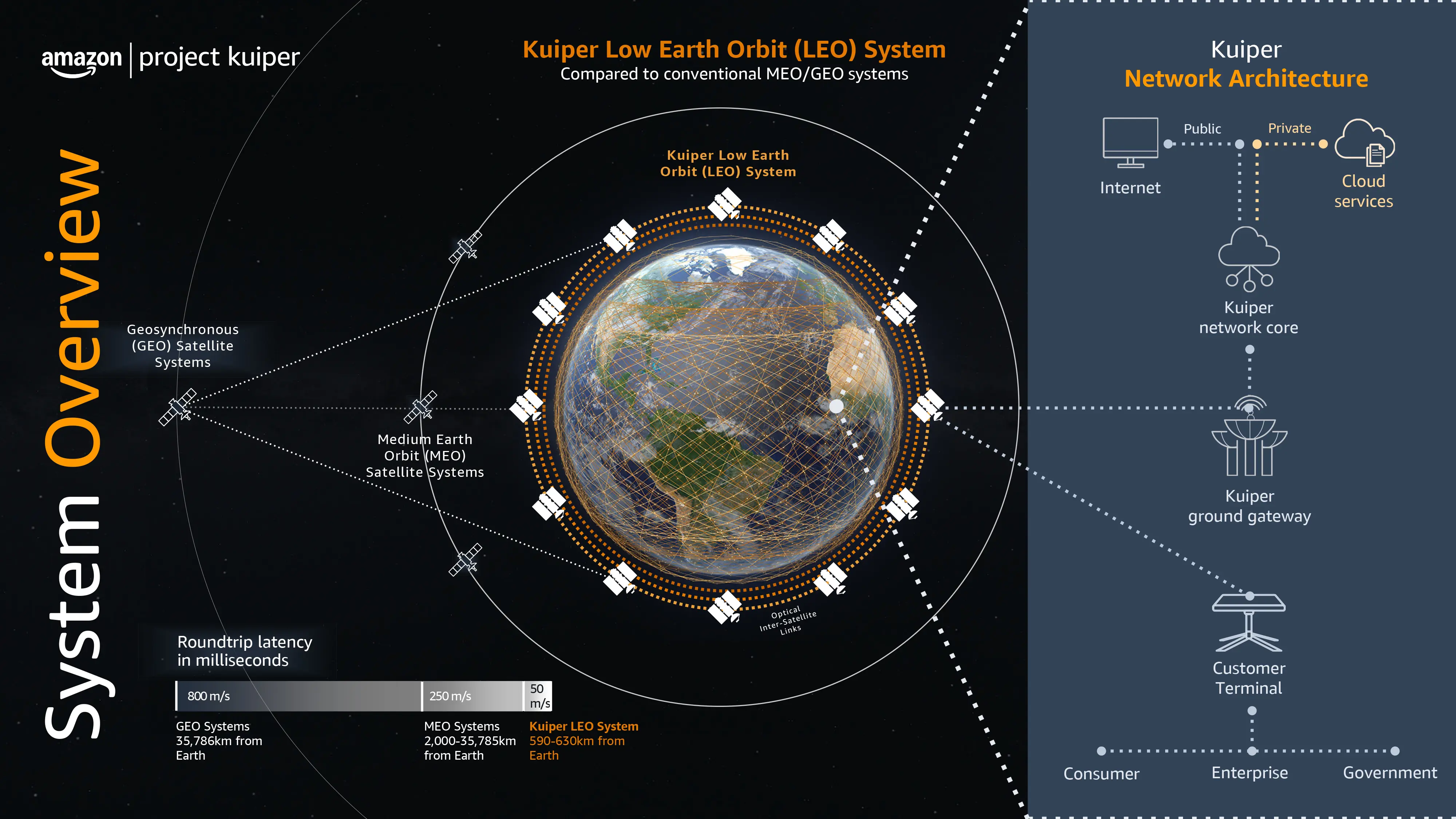- by
Amazon Races Ahead: Project Kuiper Set to Challenge Starlink with 2026 Satellite Internet Launch

Amazon is moving closer to activating its highly anticipated satellite internet program, Project Kuiper, with the company signaling that its first coverage zones could go live in the United States, Canada, the United Kingdom, France, and Germany as early as the opening months of 2026.
During the World Space Business Week in Paris on September 15, Ricky Freeman, president of government solutions for Project Kuiper, confirmed Amazon’s target to officially launch commercial broadband service across these five key markets by the end of the first quarter of that year, according to a report from Bloomberg.
This public declaration sets the stage for Amazon’s long-awaited confrontation with Elon Musk’s Starlink—currently the dominant force in satellite-based internet. While earlier statements from Amazon hinted at a late-2025 start to operations, this marks the clearest timeline yet and reveals exactly which regions will be first to connect.
Building an Orbital Network
Freeman outlined Amazon’s plan to have more than 200 satellites in low-Earth orbit (LEO) before the close of 2025, laying the framework for an aggressive rollout. Yet this only represents the starting point. The company intends to eventually deploy a vast constellation exceeding 3,200 satellites, enabling high-speed broadband access across almost every corner of the globe.
Coverage will expand step by step. By the latter half of 2026, Kuiper is expected to reach further into southern latitudes, with service set to span up to 26 nations. Expansion into equatorial regions is scheduled by 2027, followed by near-global coverage—including the polar regions—between 2028 and 2029. From that point, Amazon anticipates continuing launches beyond its approved satellite fleet, cementing Kuiper’s role as one of the largest connectivity ventures in space history.
